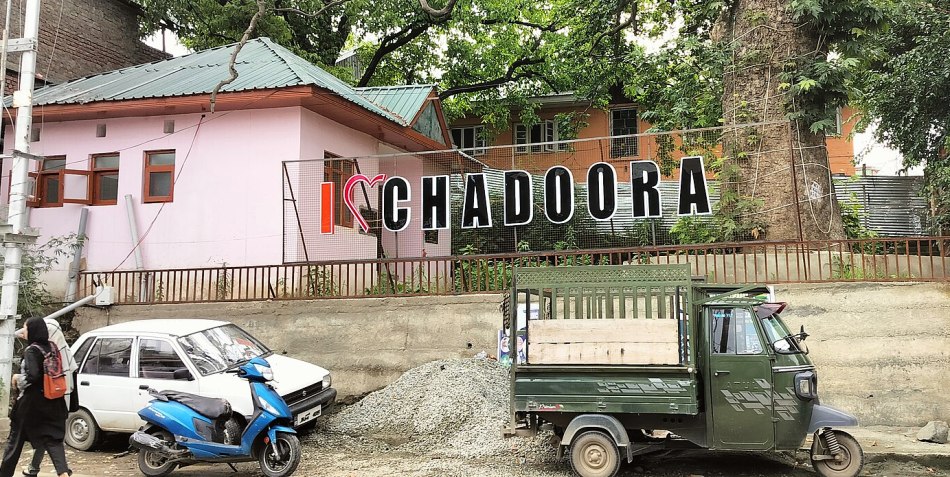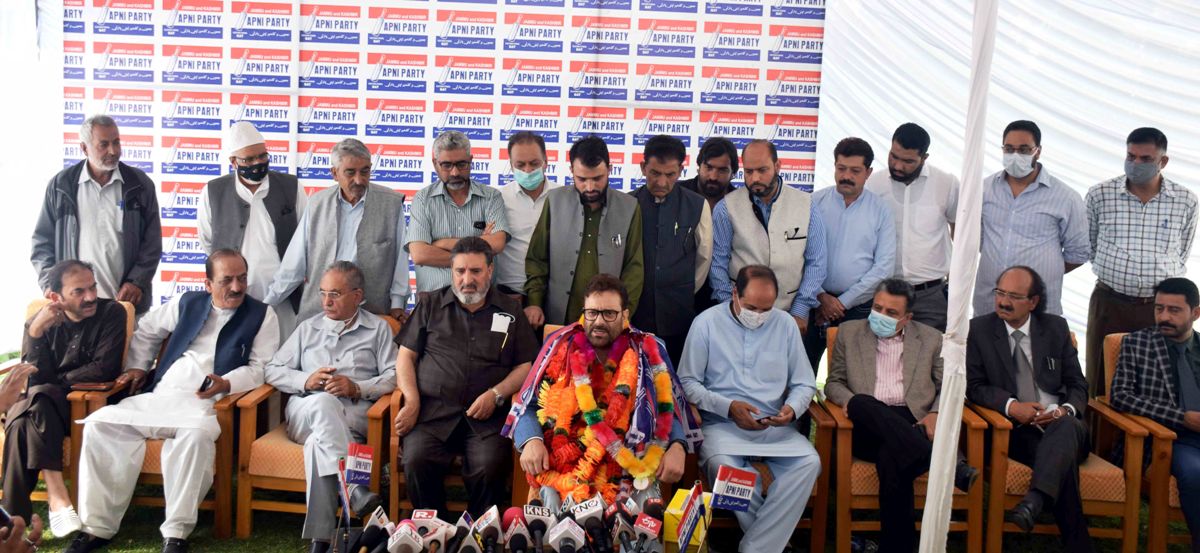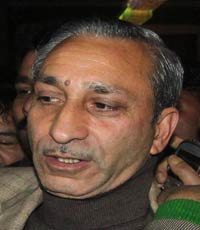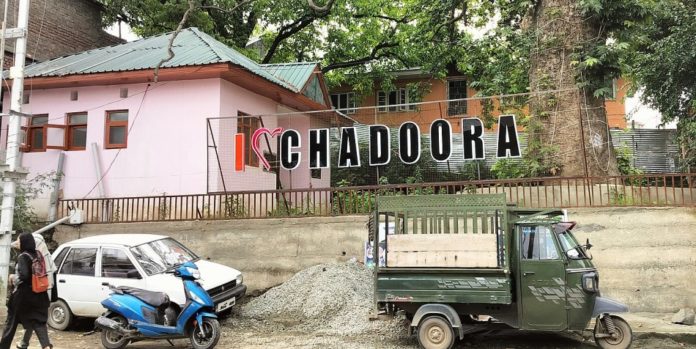In Chadoora while JKNC and PDP are fighting it out, the debate is more about the absence of Javid Mustafa Mir who represented this segment thrice but decided not to contest, writes Farooz Ahmad Lone

Chadoora, a Tehsil and an assembly constituency is nestled in the district of Budgam, situated approximately 16.8 kilometres from Srinagar. As one of the 90 assembly constituencies in Jammu and Kashmir, Chadoora forms a significant part of the Srinagar parliamentary constituency, represented in the Lok Sabha. Designated as a general seat, the Chadoora assembly constituency encompasses the town and municipal committee of Budgam.
A total of six candidates remain in the fray for the seat. They are Ali Mohammad Dar (JKNC); Mohammad Yaseen Bhat (PDP), two independent candidates, Faisal Ahmad and Nilofar Sajad Gandru; and Syed Fahad Andrabi of the Apni Party.
The principal contest, as perceived by electors, pits JKNC’s Ali Mohammad Dar against JKPDP’s Mohammad Yaseen Bhat. Seemingly, Dar appears to hold the advantage.
This electoral landscape has been rendered more intriguing by the notable absence of Javaid Mustafa Mir, the former Minister of Revenue, from the fray. Mir has defected to the JK Apni Party and assumed the role of Vice President but is not contesting.
Mir’s absence is particularly significant given his historical dominance of the seat. He secured victory in three consecutive elections – 2002, 2008, and 2014 – maintaining control of the constituency for nearly 18 years. His decision not to contest has altered the dynamics of the election, sparking interest in how his former constituency will now vote.
The forthcoming election promises to be a watershed moment for Chadoora, marked by significant departures from the past. Most notably, a long-standing key player has opted out of the contest, paving the way for newcomers to enter the fray.
Locals observe that the absence of Mir, coupled with the recent delimitation, has profoundly altered the constituency’s political landscape. This shift has created an environment in which the JKNC’s candidate is now viewed as the frontrunner.
Electors
The Chadoora assembly constituency presently boasts a total of 89,068 registered voters. A closer examination of the demographic breakdown reveals that male voters constitute 49.78 per cent (44,313) of the electorate, narrowly outnumbered by female voters, who account for 50.22 per cent (44,754).
Further analysis of the voter demographics reveals that senior citizens aged 85 and above total 589, with males and females evenly represented at 297 and 292 respectively. Additionally, the constituency is home to 636 voters with disabilities, defined as those with 40 per cent or greater disability. Notably, two transgender individuals are also registered to vote.
Electoral History
The electoral history of Chadoora is marked by the enduring influence of Javaid Mustafa Mir, a three-time legislator from Jammu and Kashmir. Mir’s dominance began with his first victory in the 2002 elections, secured with 15,923 votes, defeating his opponent by a margin of 8,047 votes.

Mir’s successive victories in 2008 and 2014 further solidified his position. In 2008, he garnered 16,278 votes, defeating his rival by 2,940 votes. His 2014 re-election saw him polling 25,770 votes, surpassing his nearest competitor, JKNC’s Ali Mohammad Dar, by 1,693 votes. Dar secured 24,077 votes, while independent candidates Gulam Muhammad Bhat and Bilal Ahmad Mir trailed behind with 1,261 and 665 votes respectively.
Before Mir’s ascendancy, the constituency’s electoral landscape was shaped by various other figures. Ghulam Mohammad Mir of the Indian National Congress won the seat in 1967, followed by Mir Mustafa’s victory in 1972. Abdul Samad Mir then secured consecutive wins on the JKNC mandate in 1977 and 1983. Mir Mustafa regained the seat in 1987, and Ali Mohammad Dar, currently a contender in the 2024 polls, emerged victorious in 1996.
Javaid Mustafa Mir’s unbroken tenure, spanning nearly two decades, concluded with the collapse of the BJP-PDP alliance in 2018, setting the stage for a new chapter in Chadoora’s electoral history. Javaid Mustafa Mir, it may be recalled here, is the son of Mir Mustafa who was assassinated by militants in 1990.
Demography
The 2011 census provides a snapshot of the population dynamics within Chadoora Tehsil. At the time, the total population stood at 212,233, comprising 113,529 males and 98,704 females.
A breakdown of the working population reveals that approximately 43,893 individuals are engaged in various occupations. Within this segment, males predominate, accounting for 39,522 workers, while females constitute a smaller but notable proportion, numbering 4,371.

The constituency’s population exhibits diversity in terms of social categorisation. Scheduled Tribes have a significant presence, with a population of 6,282. In contrast, Scheduled Castes are represented by a smaller, albeit still notable, total of 188 individuals.
Educational attainment in the Tehsil area is characterized by a literacy rate of 62.54 per cent. This figure is disaggregated into 73.62 per cent for males and 49.93 per cent for females, highlighting a disparity between the sexes.
According to census data, Chadoora Tehsil is home to 30,390 families. The sex ratio, calculated at 869 females per 1,000 males, falls below the Jammu and Kashmir state average of 889.
Notably, the population of Chadoora Tehsil is predominantly rural, with 77.7 per cent of residents residing in rural areas. Conversely, the urban population constitutes a smaller proportion, accounting for 22.3 per cent of the total. This demographic distribution underscores the constituency’s distinct characteristics and the varied needs of its population.
Geography
Chadoora is situated approximately 40 minutes by road from Srinagar, the summer capital of Jammu and Kashmir. Its strategic location is bordered by several neighbouring constituencies. To the north, Chadoora is flanked by the Lal Chowk constituency (number 22) and Chanapora constituency (number 23), both of which fall within the Srinagar district.
The eastern boundary of Chadoora is formed by the Pampore constituency (number 32) of Pulwama district. Conversely, its southern limits are shared with the Charar iSharief constituency (number 30) of Budgam district and the Rajpora constituency (number 35) of Pulwama district.
To the west, Chadoora is bounded by the Budgam constituency (number 27). Within its jurisdiction, the Chadoora constituency encompasses a significant portion of the territory. This includes the entirety of BK Pora Tehsil and select areas of Chadoora Tehsil, specifically: Ropara Namtihal, Wathoora, Bugam Batapora, Dawletpora, Bandipora, and Yarikalan. Additionally, the Municipal Committee of Chadoora falls within the constituency’s boundaries.
This complex geography underscores the interconnectedness of Chadoora with its surrounding regions, highlighting its importance within the broader electoral landscape.
Economic Profile
Chadoora Tehsil’s economic landscape is characterised by a diverse blend of agricultural production, small-scale industrial activity, and a burgeoning service sector. Agriculture plays a vital role in the local economy, with the area renowned for its cultivation of rice, maize, and an array of vegetables.
However, it is horticulture that constitutes the backbone of the constituency’s economic framework. The prevalence of apple orchards, alongside the cultivation of almonds, walnuts, and cherries, generates substantial revenue for residents. The horticulture sector’s contribution to household incomes is significant.
In addition to crop production, dairy farming serves as a crucial component of Chadoora’s rural economy. Livestock rearing, particularly dairy farming, provides a vital source of income for numerous families.
The constituency is also home to skilled artisans engaged in traditional handicrafts, including carpet weaving, shawl making, and wood carving. These crafts are highly prized, both domestically and internationally, and provide a valuable source of income for many local families.
Beyond agriculture and handicrafts, Chadoora’s economic activity is further bolstered by a thriving trade and services sector. This encompasses a range of healthcare centres, educational institutions, and brick kilns, all of which contribute substantially to the local economy.
Challenges
Despite its economic strengths, Chadoora faces challenges familiar to many rural areas. Foremost among these is the issue of inadequate infrastructure, particularly in rural areas. Poor road connectivity and electricity supply hinder industrial and agricultural productivity, with these difficulties compounded during the winter months.
Unemployment constitutes another pressing concern, severely affecting the local population. This complex interplay of economic opportunities and challenges underscores the need for sustained development and investment in Chadoora, addressing the unique needs of its residents and fostering a more resilient local economy.


